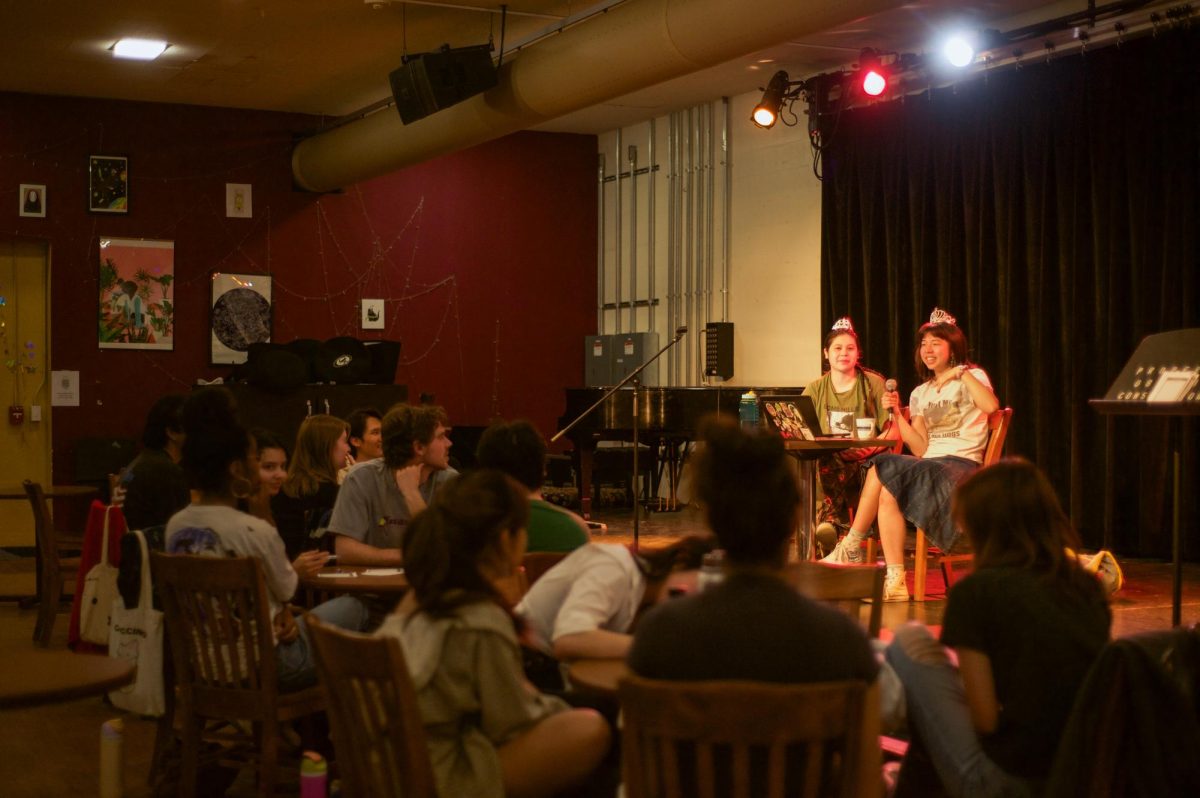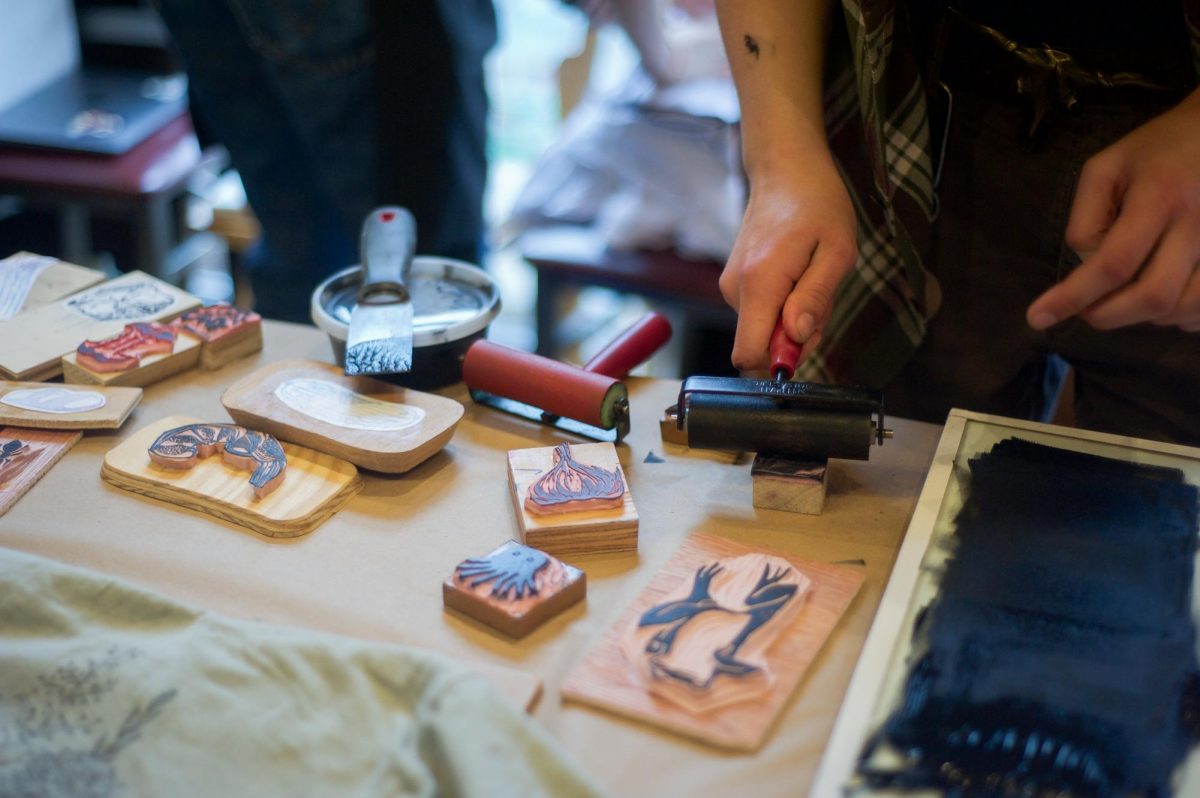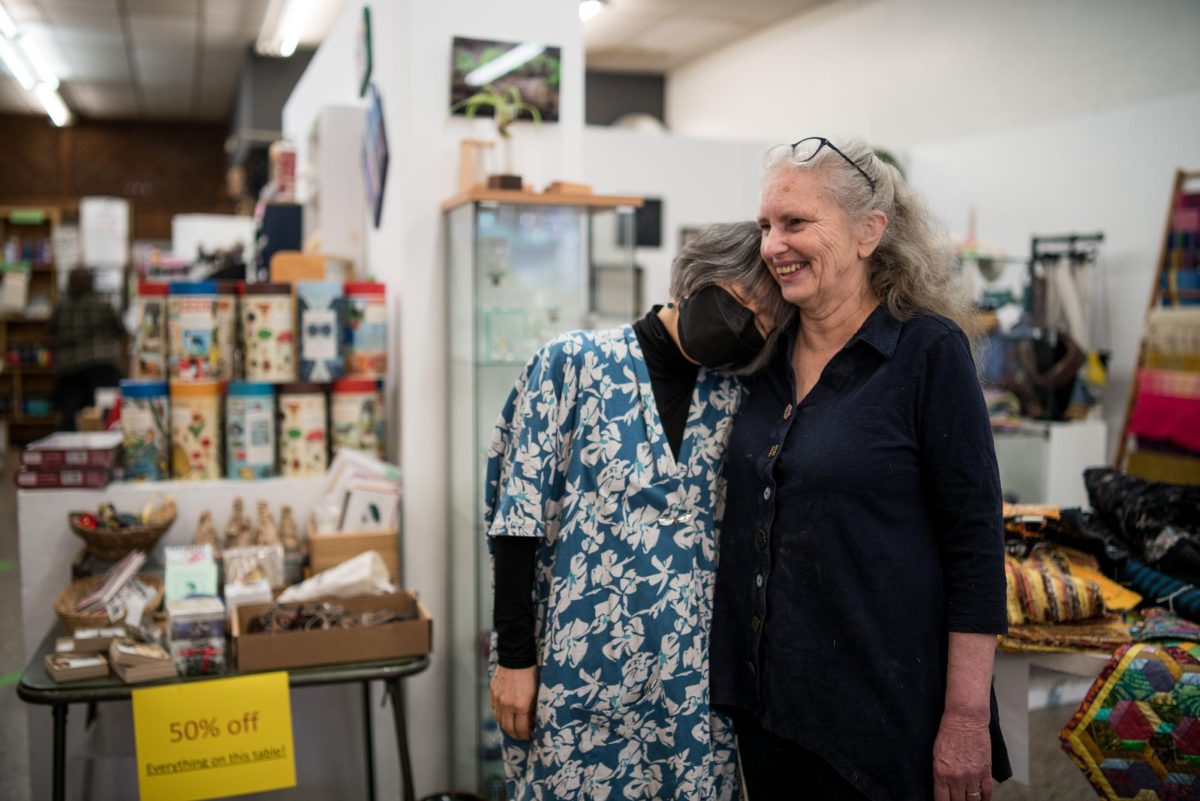College second-year Mia Knox and College fourth-year Divine McAllister are head designers for this year’s Black History Month Fashion Show. The two were tasked with designing and creating the majority of costumes that more than 30 students wore and walked in during the performance, and were also responsible for the logistical side of the fashion show.
This interview has been edited for length and clarity.
How did you get involved with the fashion show?
MK: I did the fashion show last year as a first-year student. I kind of didn’t know what I was getting myself into. I was also involved in ABUSUA, and they kept mentioning the fashion show. I was like, “I wanna be a part of this.” It was definitely more work than I was expecting, but it was also more enriching. I was the only first-year on the team at the time, so I did a lot of background work. I don’t think I spoke up too much about my opinions on things. I just wanted to be helpful, but I ended up having some creative liberty on a couple of looks. I think just experiencing that last year kind of pushed me to wanna be involved even more this year.
DM: I’ve been a part of the fashion shows since maybe the second one, which was in February 2019. That was my first year. Darian Gray, OC ’20, who was one of the Resident Assistants at the time, as well as Dae Williams, OC ’20, saw me around campus and brought me in. I was also a Brenda Greer Miller Scholar, and she was one of the peer mentors through the program. So in addition to just getting me through my academics and making me feel not out of place at Oberlin, she really brought me into the Black community. One of the ways she did it was through the fashion show. I had this cowboy hat people liked. It was this 10-gallon wide-brim cowboy hat. That was one of my staple pieces during the year and one of the things I wore during my first show.
So you both not only designed your separate lines but had a heavy hand in all the costumes in general. What is the process of designing and crafting outfits?
MK: I’m not a STEM girlie. I’ve always been more of a painter, writer, and reader. I only bring that up because my process with a lot of things is that I don’t really have a lot of ideas or framework. I kind of just jump into things and bring my ideas to life in my head. But with a lot of the looks, for example, [College third-year] Castro’s look, I just saw bobby pins and I was like, I don’t know what I wanna do with that, but I want a gang of bobby pins somewhere. For [College first-year Zaire Robertson’s] look I think I was looking at some flowers and I was like, “I wanna do something with petals, and that’s how their looks were brought to life.” So obviously the next steps are just kind of blocking out color schemes, fit, things like that. But I don’t ever really have a main idea. That’s why it’s kind of hard when people ask how do you need help? Because I’m like, “I don’t even know what I’m doing. I am making it up as I go and hope it turns out good. “
DM: I feel like throughout this whole process, I’ve just been looking at Mia like, “Damn, you literally had all this shit in your head.” Mia really does have a golden touch. For me, I don’t know. I can’t necessarily see a thing until it’s right in front of me. So I just follow that question, like what if I change a thing little by little as it works or as it doesn’t and you know, having to seam rip and start over, making things bigger and smaller as it goes. But I think it really just starts with the idea. Before we even got to the line, we had to think of the theme. Usually the theme of the show is connected to the theme of Black history and Oberlin’s Black History Month celebration in general. Our overall theme of “Home” was a really good one. And I really love that we focused on The Wiz for the fashion show. We don’t usually do theatrical shows, and we try not to do costumes, but this year we really tried to highlight the fashion, the beauty, and the creativity.
So once you have made sure that each line has its own individual idea of what’s going on, for me it was the poppies that I started working on. I started with knowing poppies are supposed to be pretty and a little seductive. In the movie there’s some drug influence and nightlife in it. It is supposed to be fun and good looking, but there’s also supposed to be a little bit of that danger. So moving through the ideas of the petal and the thorn I started out with that white cardigan sort of look. I designed it for [College first-year Isaiah Johnson] and was like, ‘What would I want to wear if I were in this line?” But I don’t actually know what I was doing. I was just trying different things.
Outside of the fashion process you also helped with the logistical side of the show. What was that like and how was that different from design?
DM: I think for me, I’m a much more hands-on sort of person. The administrative tasks are not my strong suit. So whenever I’d see other people handling budgets and doing spreadsheets, I’d just pray to God because it couldn’t have been me. One year it had to be me and that was not the most fun. I think there were also so many departments and offices working together. Literally just securing a space was hectic. Moving the clothes inside during the snow was a challenge. Working with musicians to make sure that live performances were ready and working time-wise to make sure with concert sounds works, especially being in a different space, was hard. We didn’t know until the day that we could have a livestream and would be able to share this with our families. So we were just trying to be on top of things so that we could have as much control over making sure that our vision is actually executed.
MK: It was a lot. I think because, obviously the clothes are the main focus, but the ins and outs of the fashion show was just crazy. Like, the fact that we kept losing things because there was just so much material to work with. And I don’t think people really realize that all of those outfits, they’re each entire piece in a sense. The hat goes with a specific pair of glasses which goes with that shirt and these shoes. So times that by 90. It gets so hectic. It was just a lot of the behind the scenes work that was just interesting to navigate. Really it’s so much more than the clothes. Even the music — we had to choose each song, hear each song, and plan the timing of each song so people could do all the mixing. There was the actual rehearsal, and preparing to walk. Having to think of the person who’s walking, and how is this specific to them. How do we want them to walk? It’s more than just putting on clothes and getting on stage. You gotta time it. And everybody had a different amount of time. So we were there all hours of the day. And so it then becomes how are we going to survive? How are we gonna eat? When are we gonna sleep? It’s a lot.
It’s a lot of work. Why do you do it?
DM: I think for me, I definitely miss being in a sort of leadership position. And with the skills that I possess, I may not be the best at sending emails or being on time for a place, but I can make something I like, one way or another. My hands are gonna find a way to do it and I enjoy teaching people how to do things. I think working on something as big a scale as this with so many different moving parts, I can get the opportunity to seclude myself in a room and have my talents be useful, but I also get the opportunity to share it and be in a teaching role. And then also just the style, fashion, and beauty of it all. Seeing bodies that wouldn’t normally be on runways and seeing people see themselves in ways that they had not before. So many of my peers get to take so much from this experience and have that bit of community and that bit of pride in themselves and their beauty which means a lot to me.
MK: To that point, I love seeing the process of things. It was obviously an experience just watching the fashion show happen for different people, but I think just seeing it all come to life makes you have a different appreciation for things. I really do see it as like giving back to the community in the sense of it doesn’t always have to be gifts or food. I think experiences like these really help a community thrive. Like I said, I am a creative person, but I am also busy and I don’t always have time to feed that creativity. So even though it was a lot of work, I do think that it kind of fed my creative side to see it come to life. It was great.









